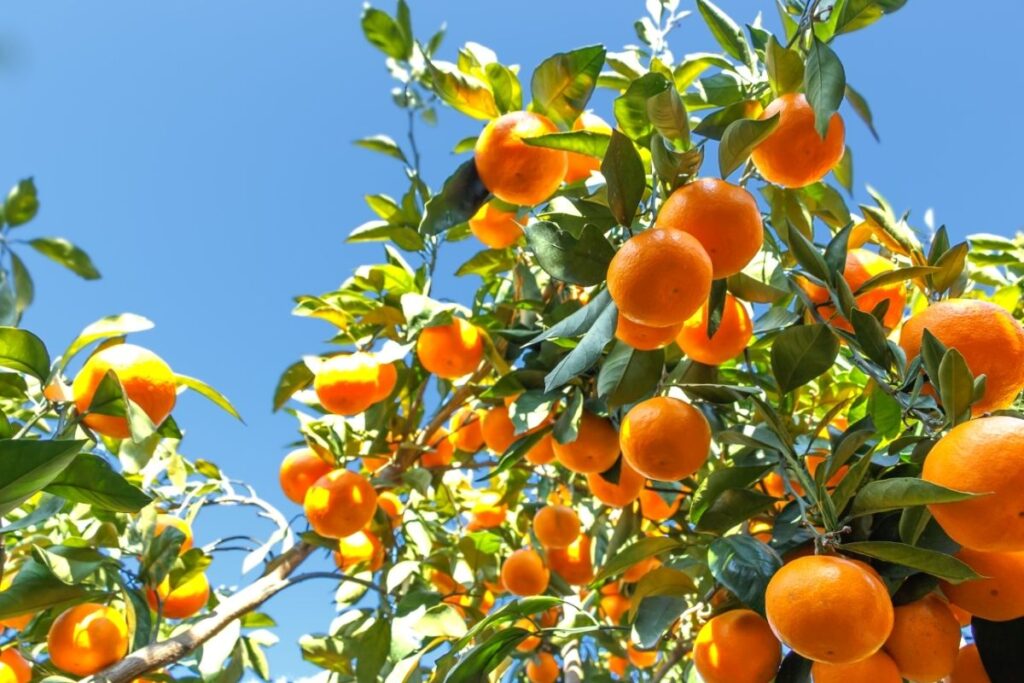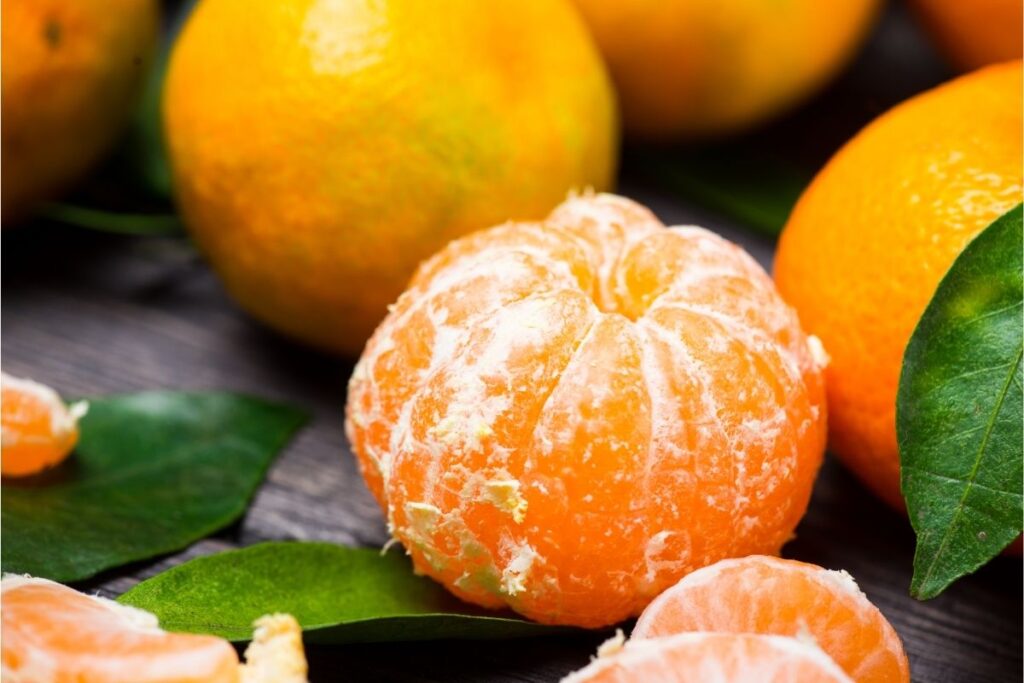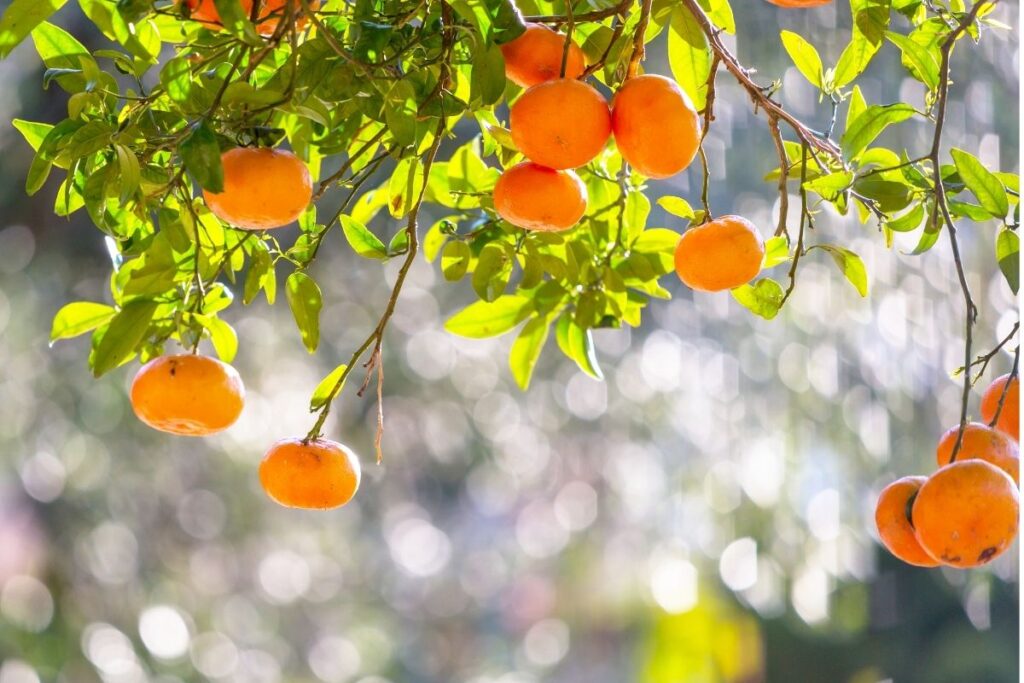Many people assume that tangerines only come in one variety. ‘It’s not an orange, so it must be a tangerine’ is often how people internalize what exactly this delicious fruit is. However, there are several types of tangerine trees, each offering unique flavors and characteristics.
But tangerines are more than just oranges that are a little on the small side.
The tangerine tree has been around for centuries and was originally from Asia Minor and has since gone on to be grown around the world, with many growers developing their varieties.
Don’t believe us? Then take a look at this list of just some of the tangerine trees out there that you can find and grow right now!
1. Algerian Tangerine

Probably one of the best-known varieties of tangerines, this variety is also known as the clementine tangerine.
They grow well in warm climates and tolerate cold weather. Clementines are one of the most frost-resistant fruit crops, meaning they require little protection from harsh temperatures.
This kind of fruit tends to start fruiting some time during late fall or the middle of winter, where it grows, between November and late January. This type of tangerine peels very easily and has smooth and glossy skin.
People enjoy eating clementines, and they are often used as gifts due to their sweet taste.
Clementines are native to the Mediterranean and North African region, but they have been cultivated worldwide in the last few hundred years.
From South Africa to Australia, clementines are widely grown. This means that people around the world can enjoy eating clementines in their home gardens.
2. Encore Tangerine

The encore tangerine is what is known as a hybrid variety of tangerine. This means that it was originally grown from two separate cultivars that are combined into a single plant for different desirable traits, usually by grafting a piece of one onto the growing plant of another.
These traits are then exaggerated over many plant generations to get the desired result that a person is looking for in their fruit.
In the case of the encore tangerine, the traits that farmers and growers were looking for included a very tart, sweet flavor to the fruit, as well as being juicy, and their pulp being a deep orange.
The tree that the fruit grows from is an evergreen tree, meaning that it grows best in places where a warm, relatively moist temperature is maintained.
When it is grown outside these conditions, encore tangerine trees typically need to be grown in greenhouses.
3. Satsuma Tangerine

One of the sweetest varieties of Tangerine that you can find out there, the Satsuma tangerine is one of the most popular varieties of tangerine grown around the world.
This variety was originally grown in East Asia, specifically in China, then in Japan.
They originated in China they were brought to Japan centuries ago. These days, they’re grown primarily in Okinawa prefecture. They typically start growing and ripening their fruit between July 1st and August 15th.
They’ve been cultivated since the Edo period in Japan. They don’t require any special care once they’re harvested, as more sensitive fruit do, such as being kept in colder conditions to maintain their freshness.
They’d last longer in storage if kept at room temperature. There are several varieties available of this type of tangerine, including Satsuma, Kagoshima, Hamamatsu, and Miyazaki.
These citrus fruits are highly nutritious and contain many vitamins and minerals. They are also rich in fiber, calcium, and potassium and are also low in calories and sugar content.
4. Willow Leaf Tangerine

These tangerines are grown on dwarf willows rather than standard orange trees. This is why these tangerines are called willow leaf tangerines.
Dwarf willows are smaller trees that grow quickly, and they produce a faster crop than regular orange trees.
Because they do not require pruning, these plants are easier to maintain. Because of this, they tend to produce bigger fruit than normal oranges.
When purchasing dwarf willow leaf tangerine seeds, buy those that are labeled “dwarf” and “tangerine.” These seeds allow you to grow a true tangerine tree. If you purchase the seeds without either of these labels, you will grow a hybrid between a tangerine and an orange.
Willow leaf tangerines have been grown in Europe since the early 19th century, where it was originally grown in Mediterranean countries such as Spain and Italy.
5. Murcott Tangerine

You may not think much about tangerines until you see these gorgeous Murcott trees in your backyard. These are the largest tangerines I’ve ever seen. The fruit grows up to 2 feet tall and 1 foot wide.
Murcott tangerines are big, juicy, and sweet. And they’re also a beautifully lush color with their skin!
These tangerines grow on the willowy branches of the parent tree in large clusters, usually numbering between 4 and 10 tangerines per cluster.
These tangerines also produce large amounts of seeds in a single fruit that grow around the center, which can make them a little frustrating when they are eaten raw.
Whilst the original place where this tangerine was first cultivated has been lost to time, this variety is now often grown in and around Florida.
6. Dancy Tangerine

Dancy tangerines are a cross between a mandarin orange and a tangelo (a hybrid of tangerine and pummelo). The fruit grows on small shrubs ranging in size from 10-15 feet tall.
This is a variety of tangerine that grows best in humid climates that stay warm all year around. Places like Florida and Arizona have just the right climate to grow this delicious tangerine in large quantities.
Dancy tangerines are one of the most popular varieties of citrus fruit grown in California. This popular fruit is known for its sweet flavor, delicate texture, and beautiful appearance.
Like any other tree, dancy tangerines require proper care and attention to grow healthily. The following information should give you an idea about what to expect from growing these tasty fruits.
7. Page Tangerine

Another variety of tangerine is the page cultivar. This very much has a lot in common with many other varieties of tangerines. They fit comfortably in the palm of your hand and come in a variety of red and orange hues.
This variety is a kind of hybrid plant between two variants: a minneola tangelo and a clementine tangerine.
Tangelo is itself a hybrid between a grapefruit and tangerine itself, meaning that this hybrid comes from yet another hybrid variety and is also at least partially related to the grapefruit plant.
This isn’t uncommon in many varieties of citrus fruits. Many types of oranges, mandarins, tangerines, and grapefruits have been hybridized over the thousands of years these plants have been cultivated.
8. Kara Tangerine

Kara tangerines are a relatively recent type of tangerine to be cultivated. Whilst many other varieties have either been grown for centuries, if not thousands of years or are simply unknowns when it comes to their original.
We know that this type of tangerine was the result of the hybridization of a satsuma and a king mandarin variety of fruit in the mid-1930s, at the University of California citrus research center.
This is quite a large variety of tangerine, perhaps partly because of its mandarin ancestry. They also take a relatively long time to mature when compared to other citrus fruits, and ripen slightly later in the year when compared to other kinds of citrus fruits.
People enjoy the taste of kara tangerines, and they believe that the fruit helps maintain oral hygiene and dental health. This might not be unprecedented, either. Kara Tangerines contain vitamin C, which strengthens our immune system. Eating kara tangerines daily can protect us against cold viruses.
9. Wilking Tangerine

Some tangerine varieties have round shapes and are a bit smaller than oranges. Others have elongated shapes and are a little larger than oranges. On this rough spectrum, Wilking tangerines are certainly on the smaller size.
Orange growers use a variety of techniques to grow these tangerines. Some farmers plant young trees in rows for harvesting. Other growers transplant mature plants into large containers.
After planting, growers wait until the trees reach maturity and then harvest the fruit. Growers may pick the fruit before it matures or leave the trees to ripen naturally.
These tangerines are used in cooking, baking, or juicing. Oranges are commonly eaten raw or cooked.
10. Kinnow Tangerine

Kinnow tangerines grow well in Florida, but they require lots of water. They do well in sandy soil but not too much clay. The following information will help you decide where to plant your kinnows.
Kinnow tangerines prefer full sun and slightly acidic soil. They may tolerate drier conditions but won’t thrive in them.
Sandy loam soils are ideal for growing kinnow tangerines. Plants should receive adequate water.
Too little or too much moisture can cause stunted growth. Apply a balanced fertilizer every two weeks during the first season. Follow product directions carefully for application rates and timing.
Do not apply mulch until after the plants begin flowering. Mulch protects roots from drying out during dry spells and keeps weeds down.
11. Pixie Tangerine

Pixie tangerines are small tangerine trees, often planted in pots or hanging baskets, that grow fast and produce fruit. They are ideal for growing indoors where they don’t receive much direct sunlight.
They don’t require any special care once planted. The grower of these trees should water them in the spring and again in the fall.
Pixie tangerines do well in full shade, partial shade, and even in direct sunlight, which is why they are a popular cultivar. They do best in areas where there is plenty of moisture and fertile soil.
The most important thing to remember when planting pixie tangerines is that they prefer to be planted in groups of four. This is because each tree produces its fertilizer. A group of four plants will result in four times the amount of fertilizer.
With proper care, pixie tangerine trees can live for over 100 years.
12. Fairchild Tangerine

Yet another hybrid between citrus fruits, the Fairchild tangerine is a hybrid between an Orlando Tangelo and a clementine tangerine.
Fairchild Tangerine trees grow well in most climates, although they do perform better in warmer areas. They are very adaptable and can tolerate many different types of soil and conditions.
They prefer full sun but will do fine in partial shade too. Tangerines require little maintenance once established, although fertilizing helps promote growth.
They should be pruned after flowering each season to encourage fruit production.
The Fairchild tangerine was developed in California in the 1960s. They produce smaller fruits than other types of tangerines and also carry a lot of seeds in their fruit.
Still, it is a very popular variant across the United States, as it is available during many winter months when other variants may wither and die.
Final Thoughts
As you can see, tangerines have a surprising amount of variety to them. You can choose from several varieties when deciding what type of tangerine tree to grow.
Be sure to research which variety works best for your location before planting. Also, take into consideration the time of year to plant your new tree. It’s always better to plant in the middle of summer if possible.







